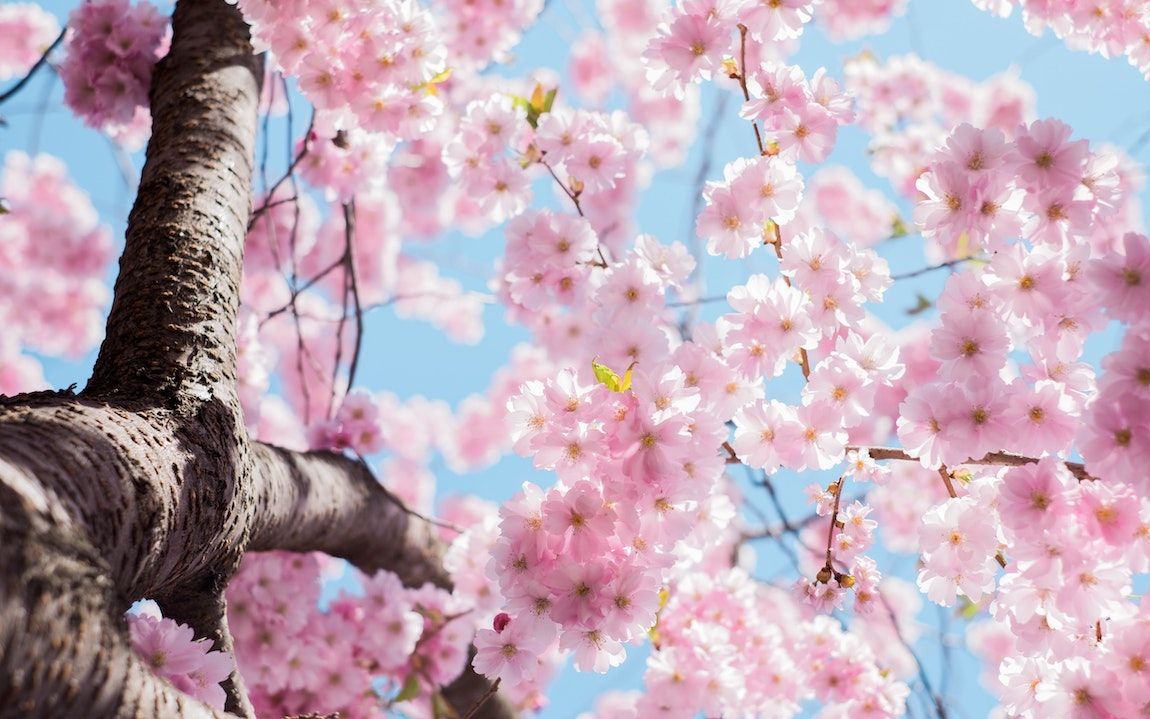As spring quickly approaches, what can tuning-in to the transience of the world around us tell us about ourselves?
The phrase ‘beauty is fleeting’ can feel melancholic, like life itself is slipping through our fingers before we’re able to get a proper hold on it. And, to combat that fleetingness, we humans often do whatever it takes to cling to the beauty around us while we can – these days, filling our camera rolls with thousands of snaps, encasing flowers in resin, making the temporary permanent. Still, the landscape painters of the Renaissance era were trying to do the same thing: hold on.
Ultimately though, we can’t contain the passing of time. That all the awe-inspiring, living things around us will eventually die and decay isn’t, on the surface, an uplifting sentiment. But perhaps it should be?
Between March and April, Japan’s cherry blossoms, also known as sakura, peak. The soft, pink and white flowers create a flourishing canopy over rural and urban landscapes alike, and are a big deal – with the public able to access daily bloom updates on national news, and festivals are held across the country. In Yoshino, Kansai, more than 30,000 trees bloom together, while in Tokyo, Ueno Park is home to 1,000 trees, which are illuminated every evening so that the public can marvel at the blossoms.
But this season is more than just a feast for the eyes. At the centre of the festivals and celebrations is hanami, the custom of gathering underneath the trees with friends and family, to enjoy both the transience of the blooms, and togetherness. People pack picnics, sometimes with spring-themed foods such as ankake meatballs, inari sushi, strawberries, and red bean mochi.

It’s a custom that is thought to have begun in the Nara period, between 710 and 794. Later on, Emperor Saga of the Heian period began holding flower-watching parties beneath the blossoms, and poems written about the flowers from across the centuries see them as a metaphor for life, in all its fleeting beauty. Matsuo Bashō a renowned Japanese poet of the Edo period put it like so:
“How many, many things
They call to mind –
These cherry blossoms.”
Like the cherry blossoms, our lives are fleeting. The whole concept of hanami is linked to Buddhist beliefs surrounding mortality and mindfulness – the importance of living and celebrating what we have right now, no matter how long it might last. But, unlike the celebration of cherry blossoms, so many of us let our lives slip by without celebration or recognition.
Australian palliative nurse Bronnie Ware wrote the book The Top Five Regrets of the Dying, inspired by her observations and conversations with the patients that she took care of. The five regrets she shares are: ‘I wish I’d had the courage to live a life true to myself,’ ‘I wish I hadn’t worked so hard,’ ‘I wish I’d had the courage to express my feelings,’ ‘I wish I had stayed in touch with my friends,’ and ‘I wish I let myself be happier.’
How many of those strike a chord? So often, we get bogged down in the everyday – be it through necessity or habit. A fulfilling and regretless life will look drastically different for each of us – but, perhaps if we took time to really focus on the limited but beautiful nature of life, we’d find ourselves connecting with the things that truly matter to us.

Building on the tradition of hanami, perhaps it’s time to take a moment to ponder this topic a little more, and spring is the perfect time to do just that. The natural world around us is coming to life and filling with colour. The air feels fresh, and ripe for new beginnings.
Venturing out into nature with this new perspective to hand might prove fruitful. Although you probably won’t be faced with miles of cherry blossom, here in the UK, we do have similar signs of the season. Think about the daffodils that bloom around this time of the year, and which have become so synonymous with springtime – their sunny petals are just the thing we need after the dark winter. And there are other springtime bulbs, like crocuses and tulips, that can equally be a reminder of the passing of time, and the wonder to be found in momentary beauty.
And, let’s not forget one of the most important aspects of hanami: togetherness. Spending time outside can offer mental health benefits for all of us, and there’s something about walking and talking that can really help us get things off our chests. What’s more, practising gratitude is a great exercise when reflecting on the things hanami prompts, and our relationships with others often top these lists.
So, as the cold weather finally begins to thaw, and the beauty of the natural world begins to blossom again, spend some time this year considering the lessons you can take from it. What does this time of the year naturally prompt you to think about? Are you looking for a fresh start, a new perspective, a new attitude? Now may be the time to release it.


Comments